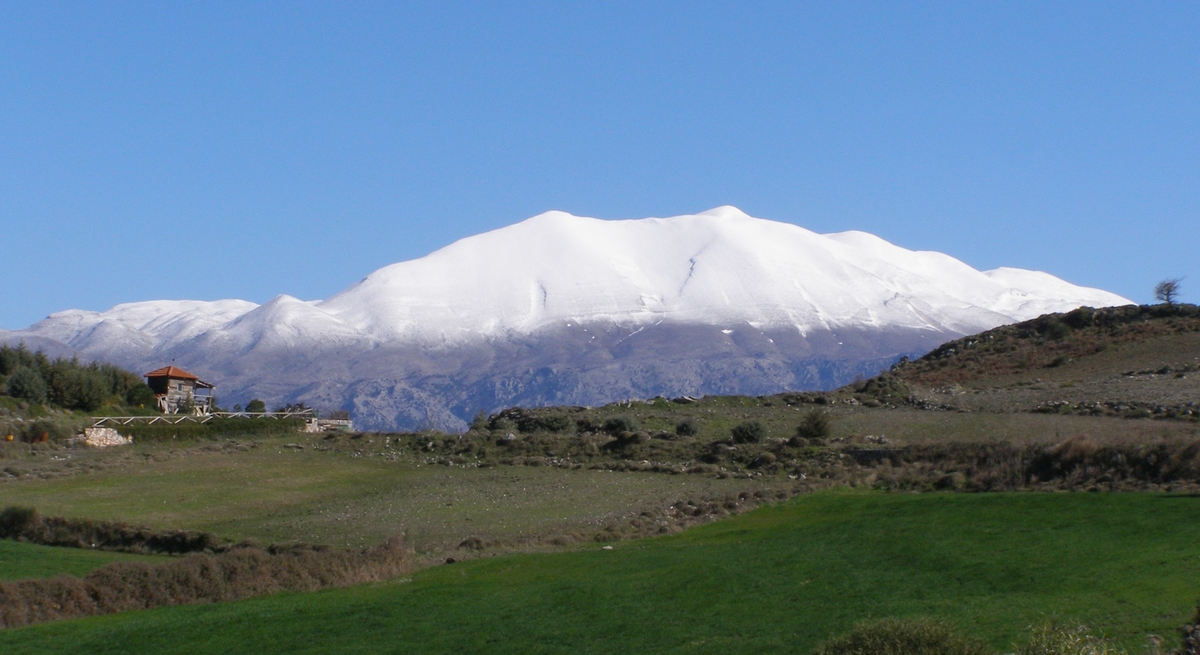Psiloritis
Great Outdoor Experiences
Psiloritis (Ψηλορείτης) means 'high mountain'. And it is also here that the highest point on Crete is found (2.454 meters above sea level). The mountain top can be seen from the terrace of Villa Talea, if you look just to the south. Completely on top is a small chapel dedicated to the Holy Cross (Timios Stavros). On the east side a road leads from Anogia up to the Nida plateau and from there begins the easiest ascent route to the highest point on Crete.
Psiloritis is also known under names such as Ida, Idha, Idi or Ita. These names are according to some sources, derivatives of the Ancient Greek 'idhi' (Ἴδη), which means 'forest' or 'wooded'. Other sources believe the word is of pre-Greek origin. In the oldest Minoan Linear A script (which can only be deciphered in part) the word 'i-da' is mentioned, which is assumed to refer to the Ida mountains.
Psiloritis Natural Park
A 1.200 km2 area around Psiloritis is appointed as natural park. It is part of the European Geopark Network (EGN) and the Global Geopark Network of UNESCO. The entire park area covers Psiloritis from the southern slopes down towards the Messara plain and the Amari Valley and includes northwards the Mylopotamos valley and the Kouloukonas mountains (Talea Ori). Our holiday house thus lies within the boundaries of the natural park area.
Psiloritis Natural Park contains some of Crete's greatest outdoor experiences. From the windswept, alpine mountain tops with dramatic gorges, caves and ancient rock formations to rivers, springs, wetlands, fertile valleys and plains. Some of Crete's finest original forests are found here. Around in the countryside you will find archaeological evidence from 8.000 years of history. And you will find some of the most original and unspoiled Cretan villages along the steep sides of the Psiloritis mountains.
Psiloritis in Greek mythology
To travel in the area around Psiloritis is to travel in the ancient mythological geography. For Psiloritis or the Ida mountain has been sacred right back to Minoan times and the mountains form background to some of the most famous Greek myths. For example it was in the Iaeon Andron cave, situated at the Nida plateau at the foot of Psiloritis' highest peak, that according to legend, Zeus grew up.
The goddess Rhea daughter of the Heaven (Uranus) and Earth (Gaia) was going to give birth to Zeus. She went to the sacred cave on Mount Ida, where she squatted. In his birth pangs she buried her fingers in the earth and the 'idaean dactyls sprang up.
It was 10 (some say 10 x 10) smiths or wizards. (Δάκτυλοι Ἰδαῖοι, 'idaean fingers', daktyloi means fingers in Greek). They later giftet mankind with the alphabet, taught them how to work with metal and mathematics. The ancient Greeks thought of this legend when they swor a solemn oath. It was the custom to press the palms against the ground while they uttered the oath.
When Rhea gave birth to Zeus, she was forced to hide him. She was married to her brother Kronos and he had the unfortunate habit of swallowing his children as soon as they were born. he had been told by his parents that it would be his fate that he should be defeated by his own son.
Rhea was obviously not very happy to see how her children were eaten one by one. So when she gave birth to Zeus in Crete, and Kronos demanded his extradition, she gave him instead a wrapped stone that Kronos swallowed immediately.
Then Rhea hid Zeus in the cave on Mount Ida, where he (according to one version of the myth) was raised by a nymph (or goat) called Amalthea. Outside the cave danced a group of Kouretes (a kind god warriors) while they beat their swords on their shields, so the noise prevented Kronos from hearing, when the little Zeus was crying. It's probably superfluous to add that Zeus later grew up fought with his father and overcame him.

